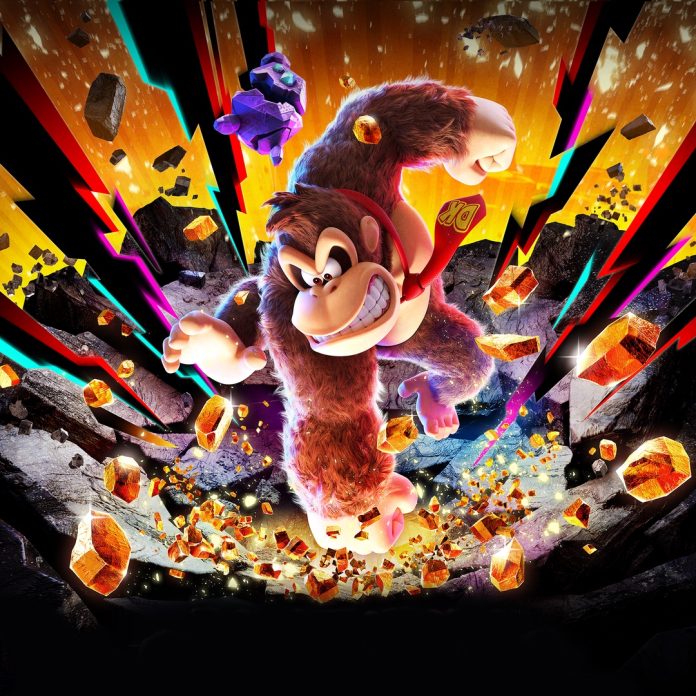Donkey Kong steps back ‒ or rather, smashes through a wall – into the spotlight.
One of the most familiar rhythms in games is the gradual accumulation of power. Link starts off with a boomerang and, several dungeons later, finally wields the Master Sword. Samus loses her powers in unfortunate circumstances and slowly gets them back.
In contrast, Donkey Kong Bananza opens with its simian star bursting through the wall of a cave, fully formed. There are transformations to discover and skills to develop, of course, but DK’s core strength – his lumbering momentum and raw, smashing power – is there from the start. It is immediate, expressive, and satisfying.
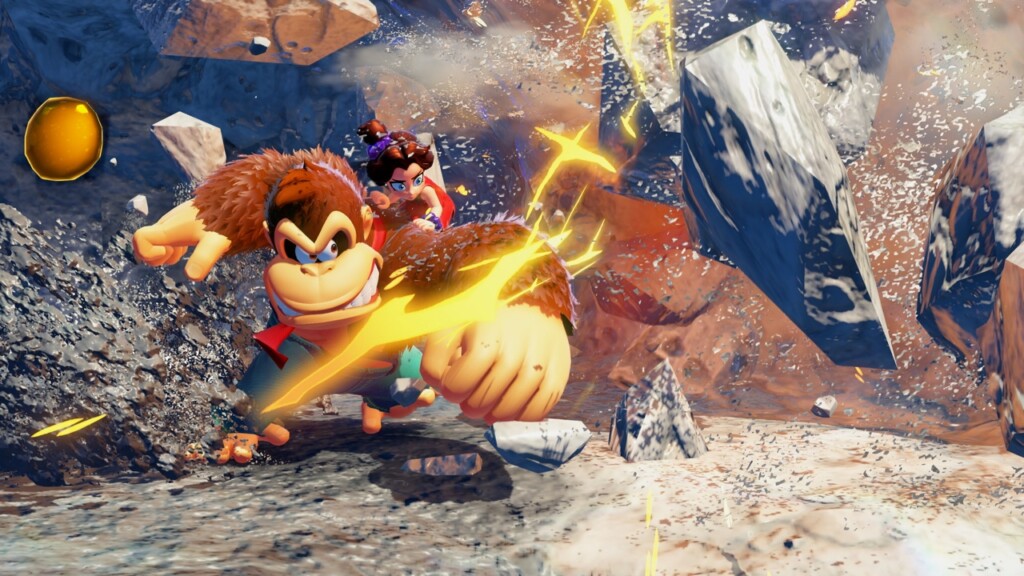
DK’s boisterous gait might feel disappointing to those yearning for Mario’s pirouetting dance of athleticism, but hold that thought. While DK may not possess a plumber’s grace, he is more than capable. Donkey Kong Bananza proves it with some remarkable 3D adventuring that includes platform jumping, climbing, surfing, rolling, throwing, flying and plenty more. He is a blunt instrument, but he has come a long way from his lolloping outings in the Donkey Kong Country series. DK might be a little scruffier than Mario, both in appearance and control, but he is no less effective, and no less fun to guide through the chaos.
Ultimate Destruction
That raggedness extends to the environments, too, each one constructed from destructible rock and other earthly materials. Donkey Kong Bananza’s levels stretch in every direction: up, down, left, right, in, and out. The twist is that you can plough through the building blocks of these sandboxes, creating paths to hidden areas, unearthing fossils, or uncovering secrets. Think Mario by way of The Incredible Hulk: Ultimate Destruction and Red Faction: Guerilla.
Thankfully, boring into walls of rock, mud, sand, and stone never gets, well, boring. Each punch and grab releases an explosion of dust and gold that, combined with subtle assistance from the Switch 2’s enhanced HD rumble, makes every moment of destruction feel tactile and satisfying.
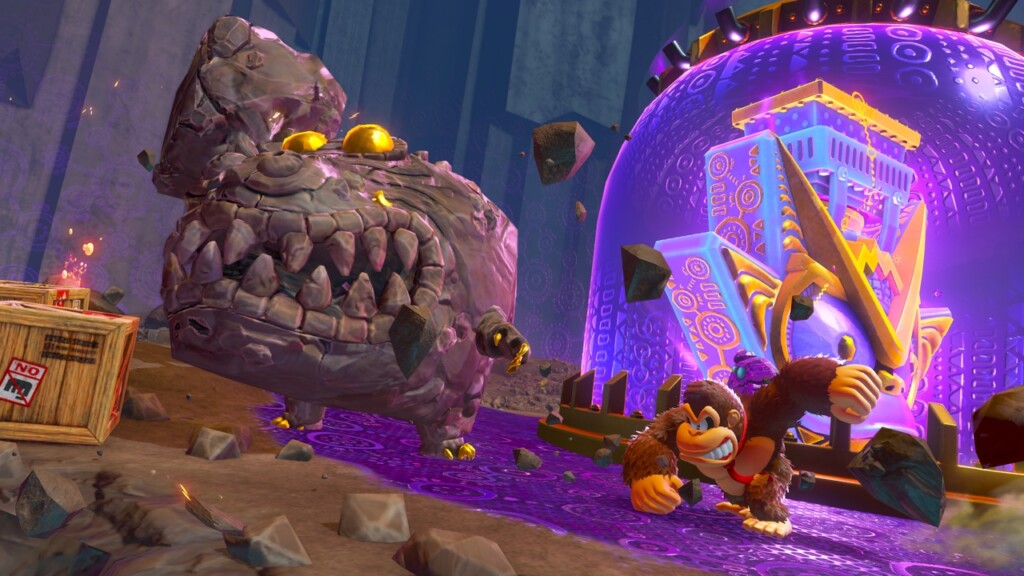
There’s a price to this chaos, however. The latitude of movement means that getting a feel for a level’s layout can be tricky to begin with. As you dig deeper into the environments, the occasionally errant camera can sometimes obscure the path forward. However, Nintendo’s developers have likely made the right call in letting players focus on expressive movement rather than limiting the action around the perfect camera angle. And such is DK’s force, it’s never too difficult to dig yourself out of a hole.
The feeling of rawness isn’t due to a lack of polish, as this is a truly handsome game, but rather a reflection of DK’s brute-force playstyle. Objectives don’t need to be neatly signposted or strictly gated, because DK can often just barrel, dig, or climb his way to a goal. The excellent map system also helps by zooming out to present the world as if you were looking at a developer’s wireframe model. It’s stylish and practical, and enormously useful in scooping up the game’s myriad of collectibles.
Donkey Kong Bananza’s lineage shines through in the sheer variety of tasks you complete to earn Banandium Gems, the game’s substitute for Super Mario Odyssey’s Moons. Every few minutes, a new mission, sub-mission, battle room, challenge level, treasure, treat, puzzle or unlockable presents itself. There is an avalanche of things to do, but it somehow never overwhelms, and you can tackle all but the most critical path objectives at your own pace.
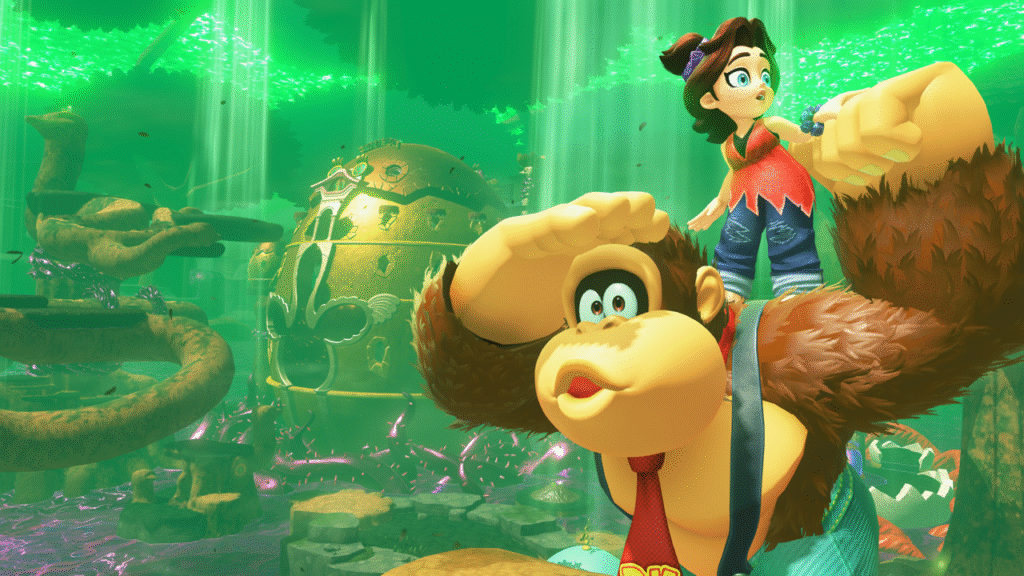
Echoes of Zelda
There is a sense of scope and freedom here that echoes recent Zelda titles. The game’s Bananza transformations, for example, introduce elements of environmental puzzle solving that bring the ingenuity of Breath of the Wild to mind. There are more direct callbacks too, from DK skydiving into new subterranean layers, to the Shrine-like challenge levels, to the Surf Turf move that clearly evokes Twilight Princess’s Spinner item. When Pauline starts hitching a ride on DK’s back, it’s hard not to think of Midna and Wolf Link.
And what a delightful companion Pauline is. Reinvented as a sparky kid full of guts and gusto, she adds to DK’s arsenal with some musical powers and mobility-enhancing moves. This is a narratively threadbare game, make no mistake, but the sense of friendship between DK and Pauline that grows throughout is really quite endearing. Pauline’s appearance in Super Mario Odyssey was a delight, but Donkey Kong Bananza should propel her to new levels of adoration with fans. With her role as damsel in distress now firmly consigned to history, she is the game’s standout character.

On paper, Donkey Kong Bananza might sound unfocused. There is almost too much going on, from the destructible worlds and Rare-esque NPCs and enemies, to Pauline’s co-starring role and the way each move can be deployed in increasingly inventive ways. Yet it works. Like the best of Nintendo’s Super Mario titles, this is a game full of micro-moments: small, ingenious actions and tiny flashes of experimentation and surprise. Each of these moments builds upon the last, until you reach the end and realise you have just experienced the grandest of adventures. And in typical Mario style, the journey is not over when the credits roll. There is more to discover, more to master, and more to break.
The Switch 2 may not have a Super Mario title this year, but Donkey Kong Bananza is the real deal. It might not best Super Mario Odyssey. I wouldn’t even call it a platformer in the traditional sense. But it is a tub-thumping, rock-smashing, mud-splattering good time, and the first essential Nintendo Switch 2 release.
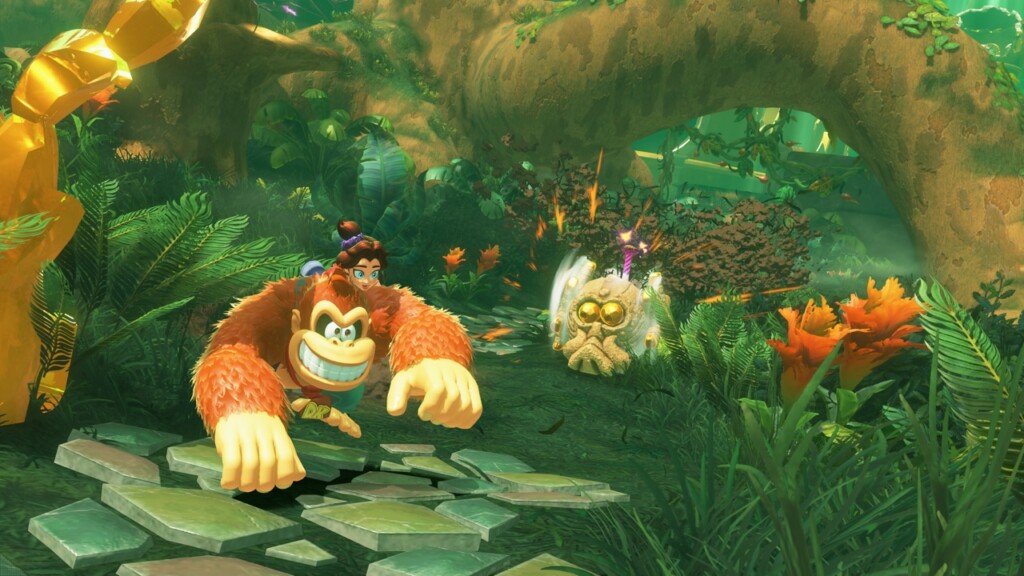
Game: Donkey Kong Bananza
Platform: Nintendo Switch 2
Developer: Nintendo
Publisher: Nintendo
Release Date: July 17, 2025
Daniel New
Donkey Kong Bananza Review
Donkey Kong Bananza review
5 5 0 1
Donkey Kong Bananza is a bold and brilliantly messy outing for Nintendo’s original video game icon. It is a worthy follow-up to Super Mario Odyssey, but most importantly, the game’s blend of destruction and creativity carves out an identity that is entirely its own.
Donkey Kong Bananza is a bold and brilliantly messy outing for Nintendo’s original video game icon. It is a worthy follow-up to Super Mario Odyssey, but most importantly, the game’s blend of destruction and creativity carves out an identity that is entirely its own.
